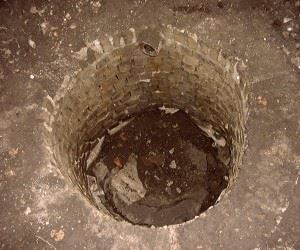How Important Is Having the Correct Drainage for Your Home?
This post is part two of two in a series about drainage.
In Part 1: Drainage Pipes we discussed different types of drains and their uses, such as Rain Gutters and Extended Drain Pipes, and how important they are in moving water away from a foundation. Also, French Drains were discussed, which can collect and intercept water in a yard before it can cause damage. In this post we will discuss other types of drainage, which are purely soil related.
Although drainage pipes are important to keep water away from a foundation, there are other things you can do to protect your house from water damage.
Pure Soil Drains
- Dry Wells – Used to collect extra groundwater from storms or other sources and send it deeper into the soil to prevent water from becoming stationary in a yard, and causing other problems. (Note: you may need to preform a Perc Test to determine which type of well is best for your soil – src: http://www.easydigging.com/guide/drywell-construction.html).
There are different types of Dry Wells: for a simple one, dig as many wells as you need, preferably at least 4’ deep, and fill them with gravel. A posthole digger can make the process easier. A more advanced one can be a preset concrete sleeve placed into a hole and fed by drainage pipes.
- Rain Gardens
Example of a rain garden. Image: James Steakly. CC ASA.
These gardens are typically created to withstand extreme amounts of moisture and to prevent water damage by slowing down rainwater runoff, giving it more time to be absorbed and less opportunity to cause problems – and with the right layout and plants they can look just like normal, attractive gardens, even supporting animal habitats.
- Grading and Berms / Fix the Grading – Grading is an important part of an efficient drainage system, and making sure it is properly installed is crucial, as an older house with unusual grading is more likely to suffer moisture damage. Look outside and make sure the landscape is laid out so water flows away from your house. Just taking a shovel and creating a berm that’s 2″-6″ in height will greatly help lead water away from your foundation, preventing structural damage and the need for repair (ref: HomeGuides: Slope Grading). Ideally, the ground should slope away from your foundation 3″ to 6″ every 10′.
- Eliminate Soil Compaction
Soil compaction, clay soil and water tables that are high: these are the main causes of moisture problems. For instance, water standing in a yard after a rainstorm is most likely a problem. Compacted soil holds less oxygen and plants have a difficult time growing in this kind of earth. Also, a lawn that is mossy is another sign that the soil is too compacted. To prevent these issues or if you notice any of these symptoms, consider using lawn aerators, conditioners for the soil or adding a layer of mulch to loosen the soil and help protect your house’s foundation.
If you have noticed symptoms of moisture damage or for more information on services, contact Ram Jack today and let the experts determine the best method to protect your house from structural problems.